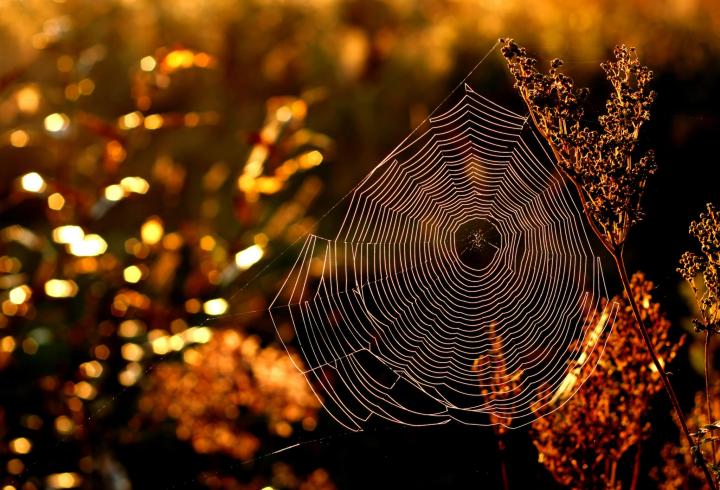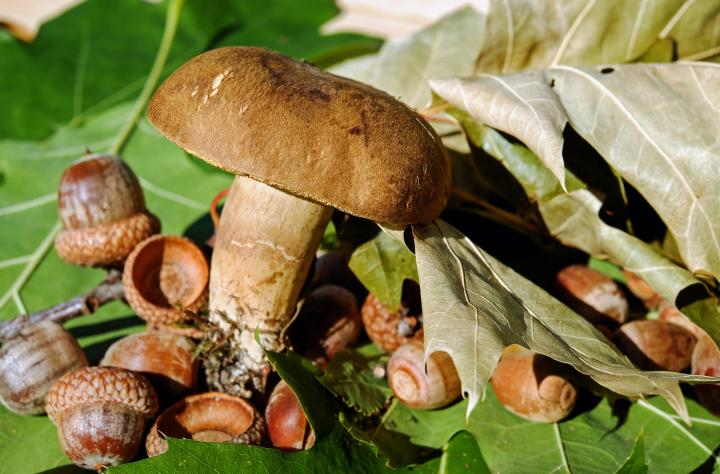
What are the First Signs of Fall? What Happens to Nature in the Fall?

Fall Flowers and Foliage
Fall Vegetable Gardening
Fall Garden Cleanup
Garden Soil Preparation
Fall Nature
ADVERTISEMENT
For me August portends with grandeur the coming of change. Cool air. Earlier sunsets. The last bright blooms of zinnia. Harvest. Best of all constant serenade of crickets
Every moment joy
In west central Michigan, there is a symphony of indicators of the season’s change. The sky shows a softer hue of blue, while the tell-tale nip of fall creeps up on you mostly in the mornings and as the sun is beginning to set. Corn stalks are drying down now. Goldenrod is coming to the end of its show. The air smells of the many local lakes, as well as the smoke of wood fires nw being kindled. And although it has been forty years since I experienced them, those Michigan autumns remain fresh on my mind.
I'm originally from Chicago where September was warm but changing to cooler temperatures, school began and children played outdoors until much colder. October meant sailing on Lake Michigan for those of means, brilliant blue skies, apples, pomegranates, taffy apples , homemade doughnuts and making costumes for Halloween, my favorite holiday full of giddy childhood memories. I've lived in the south where it was too warm to really enjoy the changes, in the desert SW where it was too hot too much of the time, and now the Pacific NW which is perfect for me. The fruit growing region yields tasty pears, oodles of apple choices and gorgeous scenery especially when Mt. Hood is snowcapped by November. The most colorful Autumn, however, was in New Hampshire, Maine and Vermont where pumpkins filled fields, leaves burst into view, maple syrup topped pancakes and covered bridges beckoned the traveler to linger just a little longer. How splendid in this change that invites pause, contemplation and serenity. Leaf peeping has never been so grand!
We live in NE TN in the Blue Ridge Mtns & the very 1st sign I see are the Locust trees' leaves turning brown, followed by acorns, which are now falling. Wooly Worms appear, my Basil turns brown & most trees leaves begin to fall. Far less cicadas din at night & baby birds shriek at their mommas for food, bc they've been weaned. Most of our hummingbirds have gone, although I saw one brave fellow just last night (9/18). The spider webs are not only bigger, but thicker as well! If you accidentally walk into one, you know it's much more stout than previous webs! As mentioned above, days are shorter, cooler & much more breezy. I begin making more soups & stews as well. We throw the windows open & welcome cooler, less humid weather to air out the house. We hate to see summer go, but embrace the more comfortable temps & just go with the Fall flow!
The silence in the mornings. Charlestown, MA
One of the very first signs of fall here in the north Georgia mountains is the color of the deer. Their coats are changing from a tan to darker brown. Happens every year right after Labor Day.
I live in Southeastern Kentucky. We have 4 seasons—although most are warmer now than when I was a child in late ‘70s-early ‘80s, and the seasons tend to overlap and mesh. We can have heavy snow in March or April, frost until late May, or close to 90 degree temps in November and December (and sometimes January) all in those same months having ice and snow, too!! Here the saying -if you don’t like the weather, just wait!-is engrained in all of us. The main reason I dislike Fall is the decreased sunlight. It starts in July by a few minutes until by this time of year it is dark by 8pm down from peak Summer at still some light by 9:30pm. Most days in Fall here are still very hot and by the time the end of October arrives, and it starts to really cool, it goes straight to freezing cold!!!!! But my main complaint is the shorter days. I do not like driving at night and I work generally until 6pm-8pm most days. It just means depression to me and most people I know also feel this way. We dread the time “falling back” and wish we could keep EDT as the standard time year round.
Living in Germany 16 years my favorite months were always September-October. No matter what the day's weather the evening skies cleared-up and were sunny and cool. And when one drove in the countryside, you would pass truckloads of turnips. My favorite events to enjoy were the 3-day Zwiebelmarkt (onion festival) in Weimar, GE and the Oktoberfest in Munich or in any small town...Prost to Autumn!
I live in the Arizona desert. We are out half an hour before sunrise to exercise the dog and the last few mornings have been beautiful- not only do we get to sleep a little later, but the morning temperatures have been in the 70’s instead of the 90’s. Fall is my favorite season - we don’t get much fall color, but the cooler temps are very welcome and so are fall rains.
Growing up and living in southeast Missouri most of my life we experience all kinds of weather. Autumn has always been my favorite time of year. From cooler days to the fall harvest. We begin to notice the cooler mornings and nights here with the days still being quite warm. The deer begin to lose their spots from birth and the rut will soon be in full swing. The acorns are maturing and the first signs of fall color are now being seen in some of the leaves with the best colors coming out in October and November. I drive a rural mail route and Ive noticed more squirrels than normal running around on the ground so autumn is soon to be in full swing! I cant wait for the bonfires, smores, and hoodie weather.










